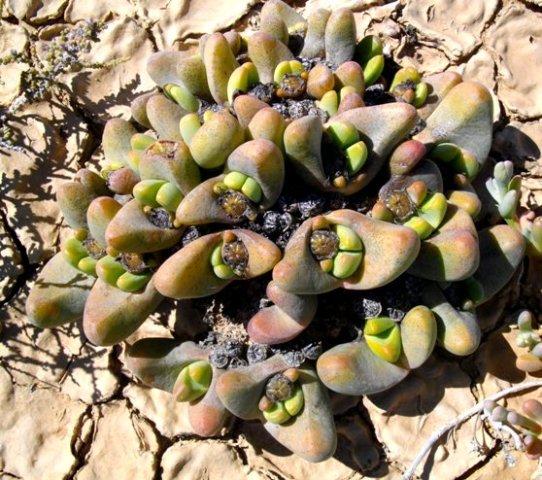Tanquana prismatica leaves

Author: Ivan Lätti
Photographer: Ivan Lätti
The leaves of Tanquana prismatica are smooth, their colours ranging from purple, yellow-green to orange and brown on newer parts, dull bluish grey on older and lower parts. Whatever colours are listed, there will always be a few leaves or part of a leaf to gainsay or extend the given descriptive range.
There is mottling from unusual cells or idioblasts upon the leaf surfaces, tiny scattered dots resembling those found upon Pleiospilos leaves.
New leaf pairs grow from the gap between old ones, from where the flowers also appear. A second leaf pair may follow hard on the heels of the first young one, presumably more frequently after rain.
The photo was taken in September, the recent winter rainy season not directly in evidence on the ground but deduced from new growth. Although rainfall in the Tanqua is low (100 mm to 150 mm per annum), the vegetation is quick to respond, capitalising on every opportunity that comes its way.
The leaves that form a T. prismatica leaf pair are often unequal. While there are no marked leaf keels, the bulging outside surfaces are variably rounded, showing angled lines only where the flat to slightly concave inside surface meets the ample back. The leaf tips are rounded or blunt, their shapes symmetrical or not. Leaves become up to 4 cm long (Van Jaarsveld, et al, 2006; Smith, et al, 1998; Herre, 1971; iSpot; www.bidorbuy.co.za).

